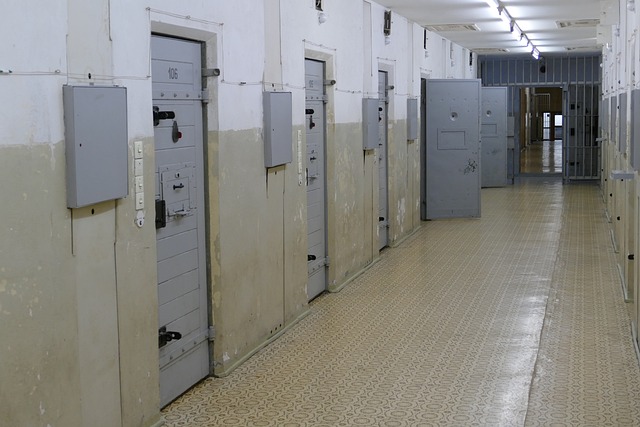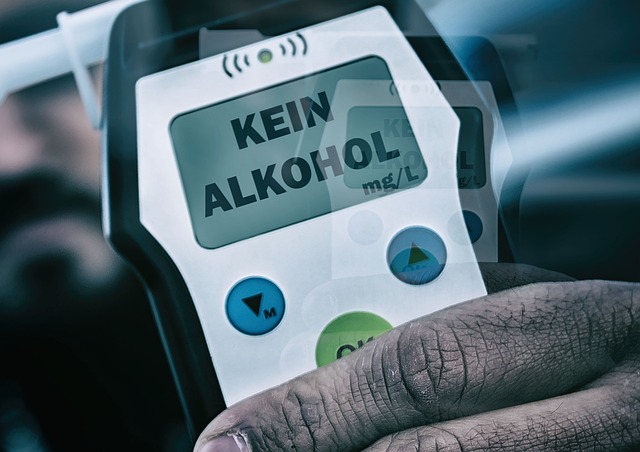High-risk reoffenders, particularly with a history of DUI and property damage liability (PDL), pose significant societal challenges due to substance abuse, mental health issues, and limited access to education or employment. PDL, while often overlooked, acts as a powerful deterrent, encouraging accountability and addressing root causes like mental health and addiction. Effective rehabilitation includes comprehensive programs with counseling, job training, and educational components. Holistic initiatives, such as cognitive-behavioral therapy, substance abuse treatment, vocational training, mentorship, and peer support, break the cycle of reoffending by empowering individuals to manage addiction, make responsible decisions, and integrate back into society, thereby reducing future criminal behavior, especially among those with PDL in DUIs.
In the complex landscape of criminal justice, understanding high-risk reoffenders and their impact on society is paramount. These individuals, often characterized by recurring offenses, particularly in areas like Property Damage Liability in DUIs, pose significant challenges. This article delves into the root causes of recidivism, exploring connections between property damage liability and reoffending rates. We present effective strategies to break the cycle and highlight successful programs that have made a tangible difference in transforming high-risk offenders’ lives.
- Understanding High-Risk Reoffenders and Their Impact on Society
- The Connection Between Property Damage Liability in DUIs and Recidivism
- Breaking the Cycle: Strategies to Reduce Reoffending Rates
- Success Stories: Programs That Have Effectively Helped High-Risk Reoffenders
Understanding High-Risk Reoffenders and Their Impact on Society

High-risk reoffenders, particularly those with a history of DUI and property damage liability, pose significant challenges to society. These individuals often have a complex web of issues that contribute to their recidivism, including substance abuse, mental health problems, and limited access to quality education or employment opportunities. Their actions can have severe consequences, not just for the victims of their crimes but also for communities at large. Each DUI-related offense increases the risk of future incidents due to factors like impaired judgment and legal penalties that may hinder stable living conditions.
The impact of high-risk reoffenders extends beyond individual lives; it shapes the social fabric. Recidivism rates highlight systemic failures in rehabilitation programs, criminal justice policies, and societal support structures. Addressing this issue requires a multifaceted approach—from enhancing access to treatment for substance abuse and mental health issues to providing career training and stable housing options. By understanding the root causes and implementing effective interventions, society can break the cycle of reoffending and foster positive change for both individuals and communities.
The Connection Between Property Damage Liability in DUIs and Recidivism

The connection between Property Damage Liability (PDL) in DUIs and recidivism is a critical aspect often overlooked in discussions on crime reduction. When an individual is convicted of Driving Under the Influence (DUI), they not only face penalties for endangering public safety but also legal obligations related to PDL. This financial responsibility, which covers compensation for property damage caused during the incident, serves as a powerful deterrent and potential turning point in the life of high-risk reoffenders.
The impact of PDL can be profound. It not only imposes immediate financial strain on the offender but also requires them to develop responsible financial habits and decision-making skills. This process can foster a sense of accountability and encourage individuals to seek support for underlying issues, such as substance abuse or mental health concerns, that may have contributed to their initial DUI offense. By addressing these root causes, there is a higher likelihood of breaking the cycle of recidivism.
Breaking the Cycle: Strategies to Reduce Reoffending Rates

Breaking the Cycle: Strategies to Reduce Reoffending Rates
One effective approach to disrupt the cycle of reoffending is through comprehensive rehabilitation programs tailored to address the underlying causes. These programs often involve intensive counseling, job training, and education on responsible behavior. By providing individuals with the tools and resources needed for personal growth and steady employment, we can significantly reduce recidivism rates. Additionally, focusing on mental health support and substance abuse treatment has proven crucial in preventing repeat offenses, especially among high-risk offenders.
Another key strategy involves community reintegration initiatives that foster a supportive environment. This includes mentorship programs pairing at-risk individuals with successful role models who can offer guidance and encourage positive choices. Moreover, implementing policies that facilitate access to education and skill-building workshops empowers former offenders to break free from criminal behavior patterns. Conversely, neglecting these support systems may contribute to the persistence of high reoffending rates, particularly when coupled with unresolved legal issues like Property Damage Liability in DUIs, which can further complicate their reentry into society.
Success Stories: Programs That Have Effectively Helped High-Risk Reoffenders

In the journey toward breaking the cycle of reoffending, several programs have emerged as beacon of hope for high-risk individuals. These initiatives focus on holistic rehabilitation, offering a range of services tailored to address the multifaceted needs of ex-offenders. One notable area of success is seen in DUI (Driving Under the Influence) cases with a history of property damage. Specialized programs that incorporate cognitive-behavioral therapy, substance abuse treatment, and vocational training have shown promising results. By providing individuals with the tools to manage addiction, make responsible decisions, and acquire marketable skills, these programs equip participants to rebuild their lives and avoid future criminal behavior.
Moreover, mentorship and peer support systems play a crucial role in long-term success. Participants often benefit from guidance offered by former offenders who have successfully navigated similar challenges. Such programs create a supportive network, fostering social integration and enhancing the likelihood of positive outcomes. Additionally, focusing on emotional well-being and mental health services helps address underlying issues that may contribute to reoffending, ultimately leading to more sustainable changes in behavior.
High-risk reoffenders pose a significant challenge, but with targeted strategies and innovative programs, we can break the cycle of recidivism. By addressing the root causes, such as understanding the impact of property damage liability in DUIs, implementing effective interventions, and learning from successful models, we can create lasting change. These efforts are essential to not only reduce reoffending rates but also to foster safer communities for all.






